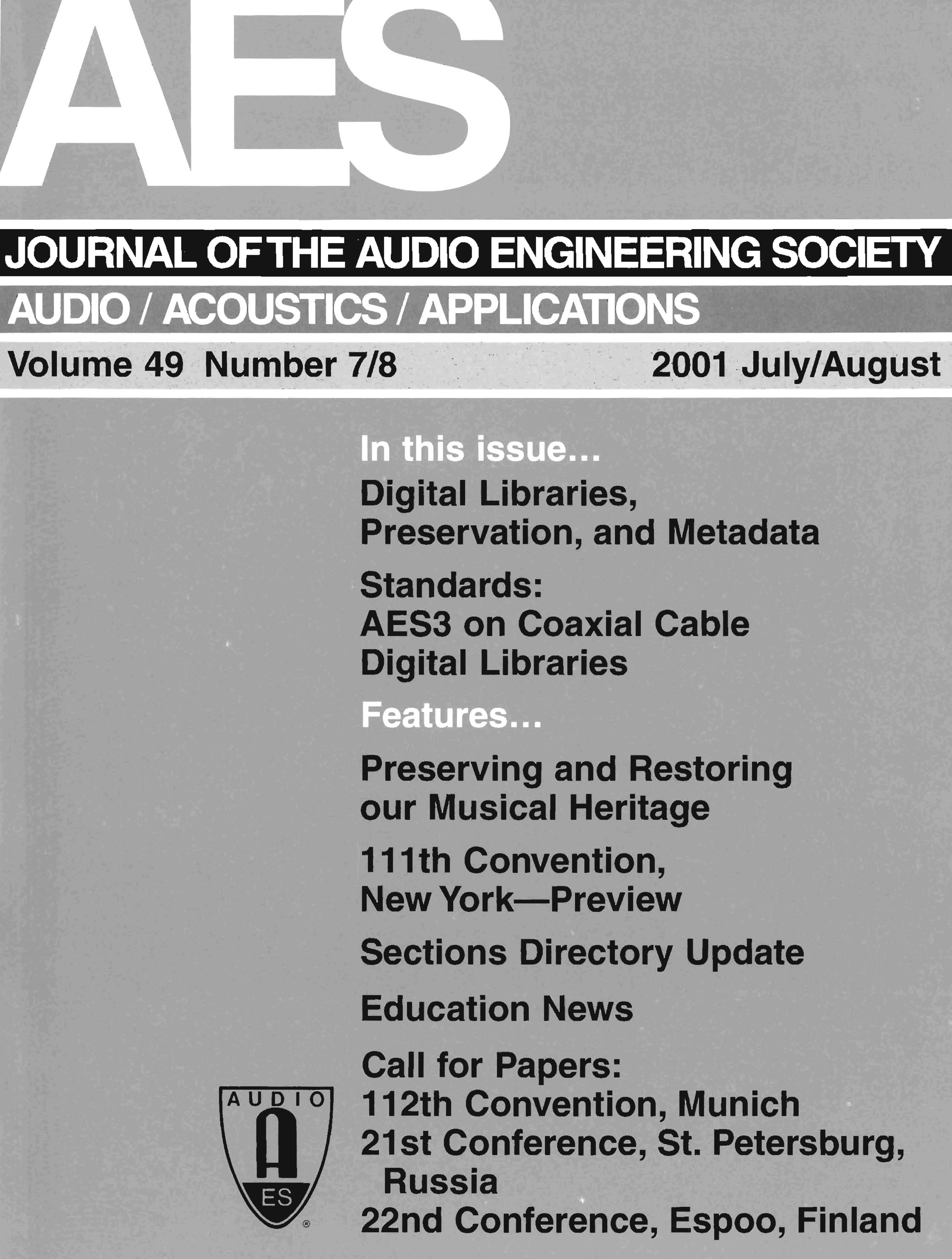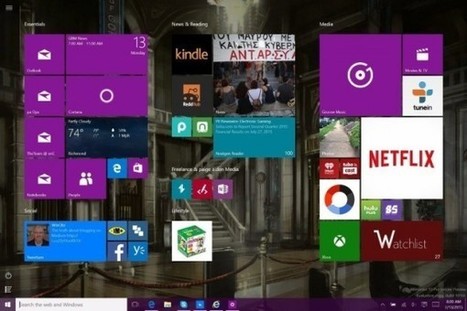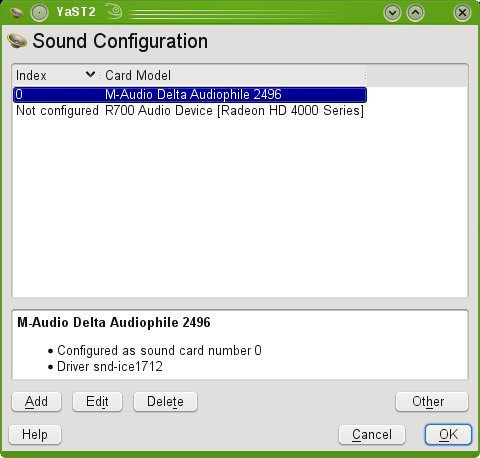The MIDI protocol was originally adopted in 1983, primarily as a tool for the electronic musician. Over the years, MIDI has had a few additions to its feature set, but, at its root, the system remains unchanged. This is the beauty of it. Because MIDI is still on Version 1.0, we can take a MIDI product released this year and immediately interface it with a piece of equipment designed more than 10 years ago. Only an inexpensive MIDI cable is needed.
Product PointsApplications: Project studio; music production
Key Features: 1RU, 8 MIDI inputs and outputs; SMPTE I/Os; RS-232 and RS-422 serial ports; Mac- or PC-compatible
Price: $799
Contact: Emagic at 530-477-1051
Emagic Soft- Und Hardware Sound Cards & Media Devices Drivers
Re: emagic website archived February 07, 2021, 11:59:27 PM Re: Korg M1 (1988) workstation + 8 track sequencer February 07, 2021, 05:08:15 PM Re: Digital orchestrator Pro 30205nt update February 07, 2021, 07:37:46 AM Re: korg electribe ER-1 (1999) February 07, 2021, 07:28:28 AM Digital orchestrator Pro 30205nt update January 27, 2021, 05:38:38 AM. EMAGIC Soft- und Hardware GmbH SoundDiver Group Executive Project Manager Unitor8 Control Logic Windows Developer: Drehbank Presets. Yamaha Promix YamahaPromix01.
- It communicated via MIDI and offered easy patch and sound management. While there was a beta version for Mac OS X, production of SoundDiver was discontinued in the year 2005. Emagic formerly offered a line of audio interface hardware, the Audiowerk PCI cards, as well as USB units.
- Hardware devices (video, sound, network cards, and similar) that were not designed for plug and play might not work in a computer that is upgraded to a newer version of Windows. If this is the case, replace the hardware device with one that is compatible with your upgraded operating system.
- For example, on Cubieboard2, the first card hw:0,0 will output through jack, while the second card hw:0,1 will output through HDMI. Generic PCs can have even more. Lakka can use only one of these cards at a time. So if you get no sound, it means you need to switch to another card. Switching audio device from the GUI.
Plus
+ Intuitive
+ Flexible
+ Easy upgrade path
Emagic Soft- Und Hardware Sound Cards & Media Devices Driver
Minus
– No SMPTE to MIDI clock converter
– Wallwart power supply
The Score: The Unitor-8, with its big feature set and easy-to-use software, is a great choice for anyone working with MIDI.
What has changed, however, is the way users and manufacturers have applied the MIDI protocol. Today MIDI is also used as a control system for console automation, effects processor control, lighting systems, animatronics and much more. As systems get larger and more complex, the need to help organize and automate MIDI connectivity has become imperative. Emagic’s Unitor-8 is just that type of tool.

Features
The Emagic Unitor-8 ($799) is single-space, rackmountable, multiport MIDI computer interface/patchbay/synchronizer, finished in a lovely shade of blue. The unit is primarily designed to be controlled from a software interface running on a computer. It can, however, work as a standalone MIDI patchbay after routing assignments have been configured from the computer software interface.
The Unitor-8’s connectivity includes eight MIDI inputs and outputs, SMPTE inputs and outputs in the form of 1/4″ Longitudinal Time Code (LTC) and S-Video Vertical Interlace Time Code (VITC) connections. The VITC implementation has the ability to burn timecode windows into the video frame – an invaluable tool for post production.
RS-232 and RS-422 serial ports allow the Unitor-8 to connect to either Windows or Macintosh computers (both types of cable are included). By using these connections, one can also link up to eight Unitor-8s off a single serial port by daisy-chaining RS-422 to RS-232 connections between the units, as needed. This provides up to 64 discrete MIDI inputs and outputs. The maximum allowable ports on a serial-equipped machine is 128; the maximum allowable ports for on a USB equipped machine is 192. The upcoming Unitor-8 MkII will be identical to the Unitor-8 save the addition of a USB port.
Macintosh computers typically have two serial ports, so a total of 16 Unitor-8s could be run (eight off of each port) providing 128 ins and outs! Mac users can also take advantage of a second RS-422 port to pass information to a printer or modem when the ÎMac thru’ button on the front panel is pressed.

In addition, the Unitor-8 has a 1/4″ TRS click input. This nifty little feature lets the Unitor-8 take a continuous click source, like a click track or even a kick drum track, and derive a tempo map that can be used as a synchronization source for a MIDI sequencer.
One can also use a standard keyboard sustain pedal to manually tap the tempo into the Unitor-8. Additionally, the click input can be used to trigger various MIDI commands to do such things as starting and stopping a sequence.
The last connection is for the power cable. Unfortunately, this is the notorious wallwart DC adapter. Can you visualize the back of a rack with eight Unitor-8s powered up at once?
For Windows users, Windows Multimedia Extension drivers permit connectivity to most software. The software for both Mac and Windows control is supplied on a standard 3.5″ DOS-format floppy disk. Macintosh computers should be able to read this with the PC-Exchange program pre-configured on all newer Macs.
The control software is basically an adaptation of Emagic’s Soundiver system- exclusive editor software. Its layout is simple and easy to follow, but reveals the many features and flexibility of what looks like a fairly basic device.
The software also includes a hyperlinked help file embedded into the editor, which I found quite useful.
In addition, the floppy disk included a firmware update for the Unitor-8 in the form of a standard MIDI file containing system-exclusive messages. Because the firmware within the Unitor-8 is also held on the EEPROM, one simply loads the file from the control software while the Unitor-8 is connected to the host computer. The update is automatically done, making downloads of future revisions from Emagic’s Web page at www.emagic.de simple and easy. Very nice!
A feature the manual (curiously) does not mention is Active MIDI Transmission (AMT). (According to Emagic, the latest AMT8/U8MKII manuals include this.-Ed.) This feature permits part of the MIDI timing engine to reside in the Unitor-8 hardware. This improves timing accuracy when triggering multiple MIDI events from different outputs at the same time.

ATM basically buffers the data in the Unitor-8 hardware, which then controls the release at each out port at the appropriate time. Other systems force the host computer to send multiple MIDI cables of information to the multiport interface using the serial cable in real-time. It is conceptually impossible for multiple outputs to play a note at the exact same time.
Information must be sent to one port at a time, which can potentially cause the timing inaccuracies to be perceivable. AMT helps to resolve those issues. It is currently available, however, only if the MIDI sequencing software is equipped with an AMT drive. To my knowledge, only Emagic’s own Logic sequencing system is fitted with this technology. Steinberg and Digidesign have technical documents to support AMT technology.
In use
I used the Unitor-8 in conjunction with a Macintosh G3 laptop, running Emagic’s Logic Audio (v3.7) software. I replaced my usual multiport interface (a MOTU MIDI Express) with the Unitor-8. I loaded up a couple of projects I’ve been working on and everything played back immediately. Piece of cake!
The MIDI timepiece emulation works perfectly. When using Logic, it is not even necessary to run the included control panel software – Logic contains the items necessary for synchronization within itself. While Logic does not require using OMS, it can work with it. Since many people will be working in that type of environment, I configured the Unitor-8 under OMS and it continued to perform as expected.
I also tried using a couple of other sequencers briefly to check for compatibility and I had no problems. When using other programs, the control software will run at the same time your main MIDI application is active. This allows quick configuration of synchronization and filter options.

Synchronization was a snap. Everything worked as expected. Menus were easy to follow and functions did what you expected. I was easily able to stripe SMPTE and then lock Logic up to a multitrack.
Having never worked with VITC before, I was anxious to give that a go. Unfortunately, I do a minimal amount of locking to video and I don’t have a TV and VCR with S-Video connectors. (I guess I’m holding out for high definition television.) The manual has a diagram that shows how to convert a cable from 4-pin S-Video connector to RCA connector. Tap off of the luminance pin, which allows you to see things in glorious black and white. This was enough to let me see how the feature worked.
I was also able to easily create the timecode burn-in window. The software controls made it simple to configure the display to my liking. If you receive a work video with SMPTE striped on an audio track but it does not contain a timecode window, the Unitor-8 will allow you to slave to the LTC source and generate the timecode window in real-time. You can now put the window where you want it or move it as needed. Because you cannot stripe LTC and VITC at the same time, I was unable to make my own work tape with a timecode display for others, who don’t have a VITC reader, to use. Perhaps a software update?
Summary
I love it when I don’t need to have my head buried in a product’s manual to use it. This is the case with Emagic’s Unitor-8, which is a very good thing – I found the manual was bit spotty. While at times everything was there, other times some detail seemed to be absent. On the other hand, the included help file provided easy access to needed information.
Although this system has a big feature set, the software control makes it very simple to use. The Unitor-8’s easy upgrade path is nice. Those who work in post production will dig the timecode burn-in window. User-updateable firmware certainly puts one at ease and leaves the door open for future enhancement. Having a product that does what it says it will do and is this easy to use is nothing short of phenomenal! Too bad they all can’t be this way. Thanks Emagic!
Emagic has now released the AMT-8. This is a USB MIDI interface that is basically identical to the Unitor-8 but lacks the SMPTE synchronization capability. It also does not have user-updateable firmware. It does however, have the ability to be networked with Unitor-8s.
Subscribe
For more stories like this, and to keep up to date with all our market leading news, features and analysis, sign up to our newsletter here.
Cmedia’s privacy policy covers the collection and use of personal information that may be collected by Cmedia anytime you interact with Cmedia, such as when you visit our website, when you purchase Cmedia products and services, or when you contact our sales or support associates. Please take a moment to read the following to learn more about our information practices, including what type of information is gathered, how the information is used and for what purposes, to whom we disclose the information, and how we safeguard your personal information. Your privacy is a priority at Cmedia, and we go to great lengths to protect it.